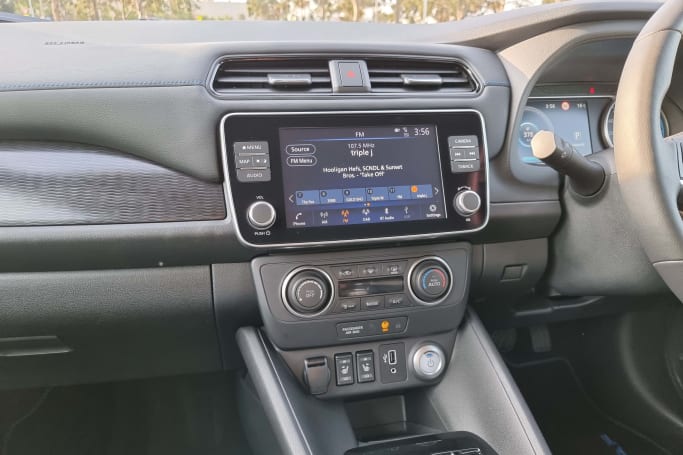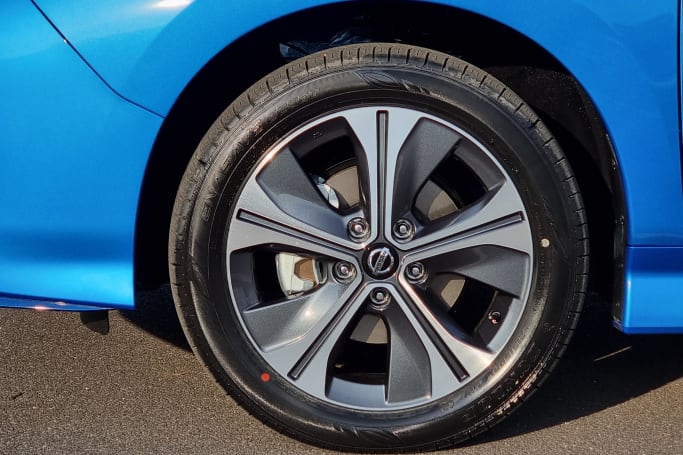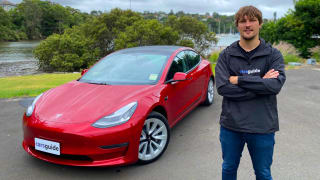New tech is always going to cost a premium, just look at how the latest flagship smartphones have crept well over $1000!
So, if you’re expecting to pay a little more for an electric car than a petrol or diesel-powered model, you’d be right on the money.
You can get into a base Nissan Leaf for $49,990 before on-road costs, but the new 2021 e+ raises the bar to $60,490. Ouch.
There is quite a long list of equipment to justify the price though, but both Leaf and Leaf e+ actually mirror each other in spec, meaning the $10,500 difference in price is due to the latter’s improved driving range, performance and charging – but more on those in a bit.

As standard, the Leaf and Leaf e+ comes with 17-inch alloy wheels, keyless entry, rear privacy glass, heated front and rear outboard seats, heated steering wheel, and a leather and suede interior trim.
Drivers are also treated to a 7.0-inch multifunction display, which can be customised to show driving range, energy consumption and more.
Handling multimedia duties is an 8.0-inch multimedia touchscreen, with Apple CarPlay and Android Auto functionality, seven-speaker Bose sound system, digital radio and satellite navigation.
There are some noticeable omissions on the spec list, however, which are especially jarring given the Leaf e+’s forward-facing powertrain.
There’s no wireless smartphone charger and there’s no head-up display, plus the park-brake is foot-operated, which is a big disappointment in a new car in 2021.





















